#dadbe1 Color Information
In a RGB color space, hex #dadbe1 is composed of 85.5% red, 85.9% green and 88.2% blue. Whereas in a CMYK color space, it is composed of 3.1% cyan, 2.7% magenta, 0% yellow and 11.8% black. It has a hue angle of 231.4 degrees, a saturation of 10.4% and a lightness of 86.9%. #dadbe1 color hex could be obtained by blending #ffffff with #b5b7c3. Closest websafe color is: #cccccc.
-
- R 85
- G 86
- B 88
-
- C 3
- M 3
- Y 0
- K 12
● #dadbe1 color description : Light grayish blue.
#dadbe1 Color Conversion
The hexadecimal color #dadbe1 has RGB values of R:218, G:219, B:225 and CMYK values of C:0.03, M:0.03, Y:0, K:0.12. Its decimal value is 14343137.
| Hex triplet | dadbe1 | #dadbe1 |
|---|---|---|
| RGB Decimal | 218, 219, 225 | rgb(218,219,225) |
| RGB Percent | 85.5, 85.9, 88.2 | rgb(85.5%,85.9%,88.2%) |
| CMYK | 3, 3, 0, 12 | |
| HSL | 231.4°, 10.4, 86.9 | hsl(231.4,10.4%,86.9%) |
| HSV (or HSB) | 231.4°, 3.1, 88.2 | |
| Web Safe | cccccc | #cccccc |
| CIE-LAB | 87.487, 0.76, -3.063 |
|---|---|
| XYZ | 67.833, 71.005, 81.362 |
| xyY | 0.308, 0.322, 71.005 |
| CIE-LCH | 87.487, 3.155, 283.929 |
| CIE-LUV | 87.487, -0.901, -4.833 |
| Hunter-Lab | 84.264, -3.769, 1.737 |
| Binary | 11011010, 11011011, 11100001 |
Color Schemes with #dadbe1
Alternatives to #dadbe1
Below, you can see some colors close to #dadbe1. Having a set of related colors can be useful if you need an inspirational alternative to your original color choice.
#dadbe1 Preview
This text has a font color of #dadbe1.
<span style="color:#dadbe1;">Text here</span>This paragraph has a background color of #dadbe1.
<p style="background-color:#dadbe1;">Content here</p>This element has a border color of #dadbe1.
<div style="border:1px solid #dadbe1;">Content here</div>.text {color:#dadbe1;}.background {background-color:#dadbe1;}.border {border:1px solid #dadbe1;}Shades and Tints of #dadbe1
A shade is achieved by adding black to any pure hue, while a tint is created by mixing white to any pure color. In this example, #050506 is the darkest color, while #fafbfb is the lightest one.
-
#050506
#050506rgb(5,5,6) -
#0e0e11
#0e0e11rgb(14,14,17) -
#17171c
#17171crgb(23,23,28) -
#1f2127
#1f2127rgb(31,33,39) -
#282a32
#282a32rgb(40,42,50) -
#31333c
#31333crgb(49,51,60) -
#3a3c47
#3a3c47rgb(58,60,71) -
#434552
#434552rgb(67,69,82) -
#4b4e5d
#4b4e5drgb(75,78,93) -
#545768
#545768rgb(84,87,104) -
#5d6073
#5d6073rgb(93,96,115) -
#66697d
#66697drgb(102,105,125) -
#6f7288
#6f7288rgb(111,114,136)
-
#797c92
#797c92rgb(121,124,146) -
#83879b
#83879brgb(131,135,155) -
#8e91a4
#8e91a4rgb(142,145,164) -
#999cac
#999cacrgb(153,156,172) -
#a4a6b5
#a4a6b5rgb(164,166,181) -
#afb1be
#afb1bergb(175,177,190) -
#babbc7
#babbc7rgb(186,187,199) -
#c4c6cf
#c4c6cfrgb(196,198,207) -
#cfd0d8
#cfd0d8rgb(207,208,216) -
#dadbe1
#dadbe1rgb(218,219,225) -
#e5e6ea
#e5e6eargb(229,230,234) -
#f0f0f3
#f0f0f3rgb(240,240,243) -
#fafbfb
#fafbfbrgb(250,251,251)
Tones of #dadbe1
A tone is produced by adding gray to any pure hue. In this case, #ddddde is the less saturated color, while #bec7fd is the most saturated one.
-
#ddddde
#dddddergb(221,221,222) -
#dadbe1
#dadbe1rgb(218,219,225) -
#d7d9e4
#d7d9e4rgb(215,217,228) -
#d5d7e6
#d5d7e6rgb(213,215,230) -
#d2d5e9
#d2d5e9rgb(210,213,233) -
#d0d4eb
#d0d4ebrgb(208,212,235) -
#cdd2ee
#cdd2eergb(205,210,238) -
#cbd0f0
#cbd0f0rgb(203,208,240) -
#c8cef3
#c8cef3rgb(200,206,243) -
#c5ccf6
#c5ccf6rgb(197,204,246) -
#c3caf8
#c3caf8rgb(195,202,248) -
#c0c9fb
#c0c9fbrgb(192,201,251) -
#bec7fd
#bec7fdrgb(190,199,253)
Color Blindness Simulator
Below, you can see how #dadbe1 is perceived by people affected by a color vision deficiency. This can be useful if you need to ensure your color combinations are accessible to color-blind users.
